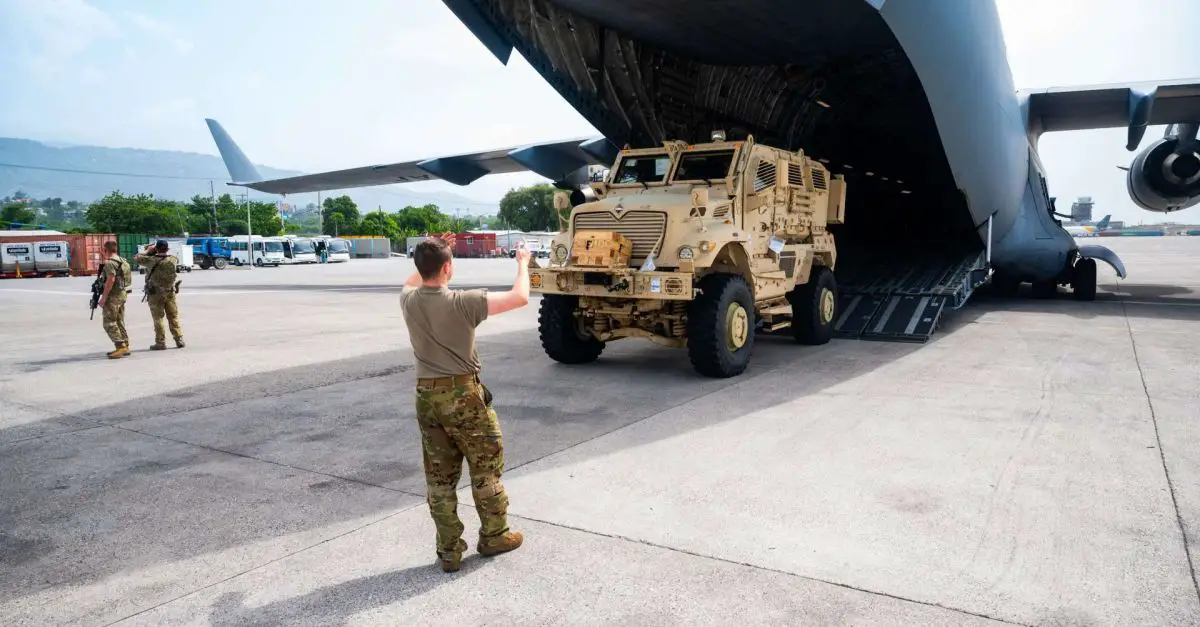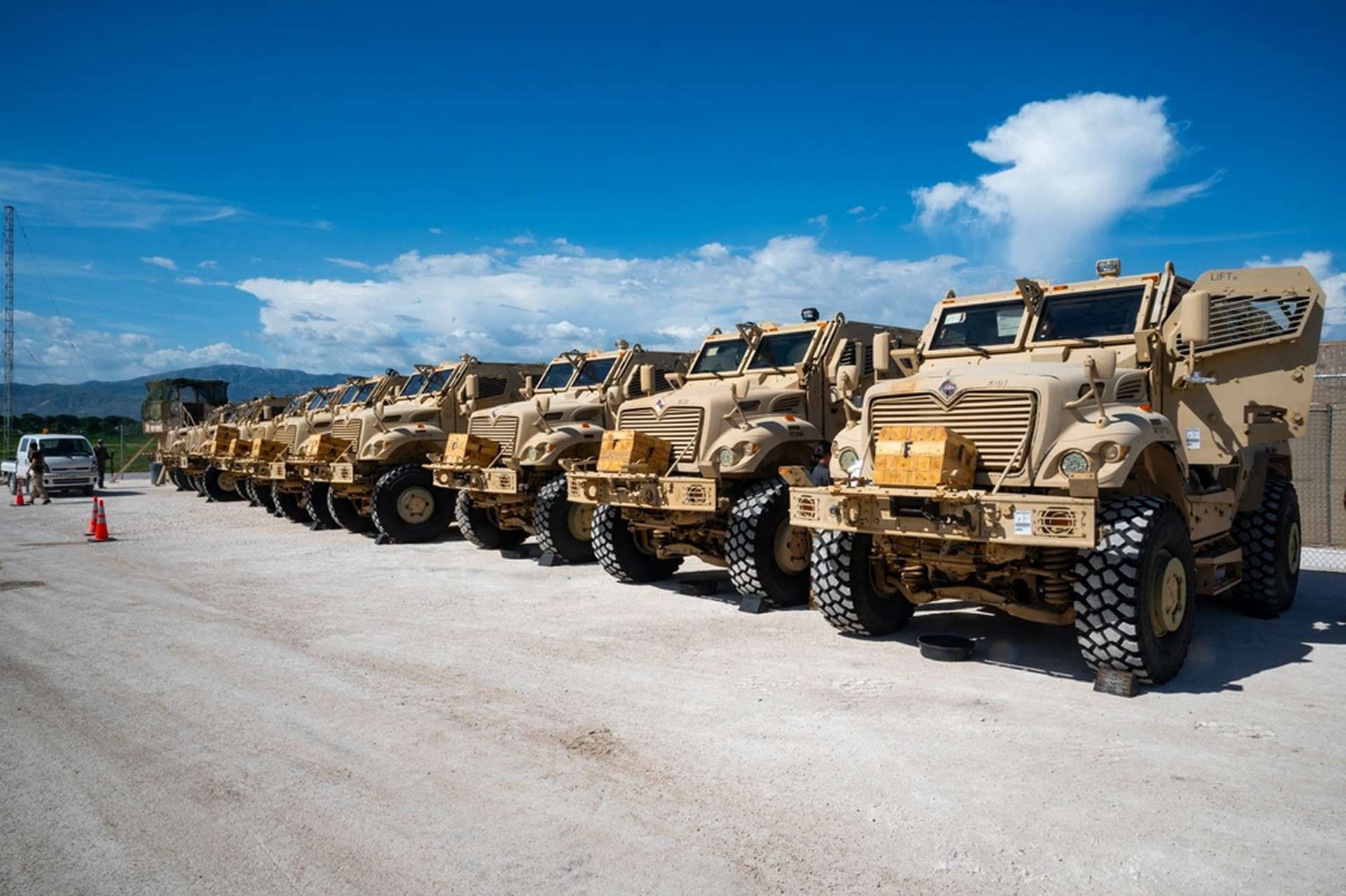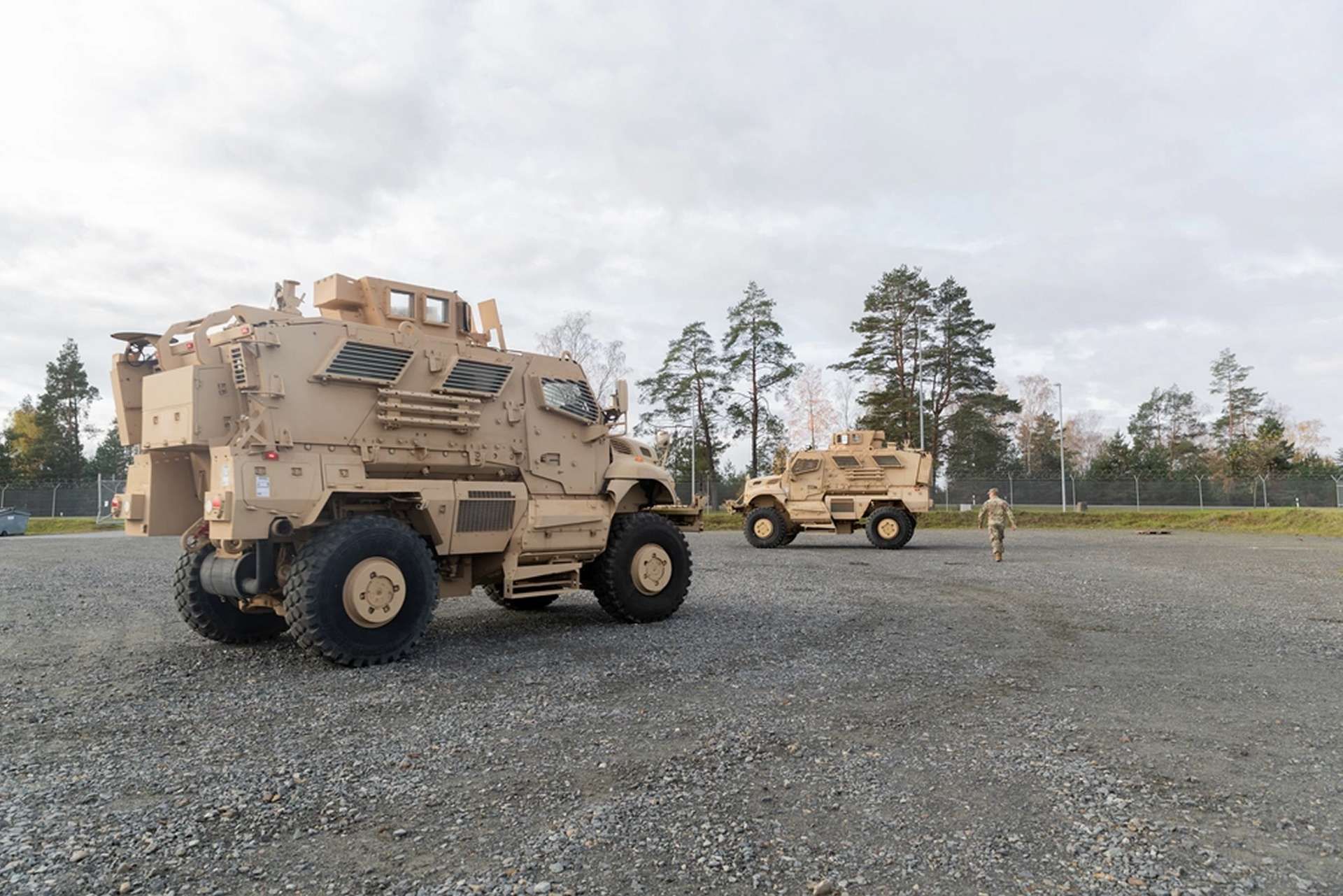Breaking News
US delivers 24 MaxxPro MRAP vehicles to support Kenya's security mission in Haiti.
On August 23, 2024, the U.S. Department of Defense delivered 24 International M1224 MaxxPro Mine-Resistant Ambush Protected (MRAP) vehicles to Kenyan personnel deployed in Haiti as part of the ongoing Multinational Security Support (MSS) mission. These vehicles will be added to an existing fleet of 10 MRAPs that the United States has already provided to assist the Haitian National Police (HNP) in their operations to restore security in areas affected by gang violence.
Follow Army Recognition on Google News at this link

Following the assassination of President Jovenel Moïse in 2021, Haiti has experienced increased violence and instability, driven largely by armed gangs that control significant portions of Port-au-Prince and other areas. (Picture source: US DoD)
Along with the vehicles, 34 Overhead Gunner Protection Kits, also known as turrets, are being transported. Contractors funded by the Department of Defense will install these turrets on the MRAPs to enhance the tactical field of view and the safety of MSS personnel involved in joint security operations with the Haitian National Police. This delivery follows the signing of a Presidential Drawdown Authority by President Joe Biden in April 2024, which authorized the transfer of U.S. federal resources to countries contributing personnel to the MSS mission. The drawdown allows the Department of Defense and other U.S. agencies to supply equipment, supplies, parts, and services necessary to support the operations and maintenance of the MSS mission, including repairs and upkeep for the vehicle fleet.
The MSS mission was deployed in response to escalating violence, political instability, and widespread gang activity in Haiti, which has overwhelmed local authorities' capacity to manage the crisis. Following the assassination of President Jovenel Moïse in 2021, Haiti has experienced increased violence and instability, driven largely by armed gangs that control significant portions of Port-au-Prince and other areas.
The situation worsened in early 2024, with coordinated attacks by gangs on state infrastructure, including police stations, prisons, and essential public services such as schools and health facilities. This violence has resulted in more than 2,500 casualties, numerous kidnappings, and the displacement of approximately 362,000 people, half of whom are children. The deteriorating security situation has also led to a humanitarian crisis, limiting access to basic services and contributing to an increase in incidents of sexual violence and abuse, particularly against women and girls.

The Multinational Security Support (MSS) mission's objectives are to support the Haitian National Police, enhance security, protect key infrastructure, and help reestablish the rule of law. (Picture source: US DoD)
Due to the Haitian National Police's limited resources and capacity to handle the crisis, the Haitian government requested international assistance. In response, the UN Security Council authorized the Multinational Security Support (MSS) mission, which is led by Kenya and includes contributions from countries such as the United States, Canada, and several Caribbean and African nations.
The mission's objectives are to support the Haitian National Police, enhance security, protect key infrastructure, and help reestablish the rule of law. While the MSS mission is supported by the UN, it operates independently of formal UN peacekeeping operations. Initial deployments began in June 2024, following efforts to address logistical and coordination challenges.
In addition to the equipment and services provided under the Presidential Drawdown Authority, the United States has contributed over $300 million to the MSS mission. Since the MSS's initial deployment in Port-au-Prince, there have been several key developments, including the resumption of commercial air traffic at Toussaint Louverture International Airport, public statements from Haiti’s Prime Minister Gary Conille on efforts to restore security, the start of joint MSS and HNP patrols, the renewal of the mandate of the U.S. Integration Office in Haiti, and the activation of a U.N. Trust Fund.

These 24 vehicles will be added to an existing fleet of 10 MRAPs that the United States has already provided to assist the Haitian National Police. (Picture source: US DoD)
The M1124 MaxxPro Mine-Resistant Ambush Protected (MRAP) vehicles included in the U.S. delivery are designed to protect military personnel from explosive threats, such as Improvised Explosive Devices (IEDs) and mines. The MaxxPro, developed by Navistar Defense in collaboration with the Israeli company Plasan Sasa, was first introduced in 2007 in response to the need for better-protected vehicles during the Iraq War. Its V-shaped hull, made of high-strength steel, is designed to deflect blasts away from the vehicle's interior, improving the safety of its occupants. The MaxxPro has been deployed in various conflict zones, including Iraq and Afghanistan, where it has been used in environments with frequent roadside bombs and ambushes.
The MaxxPro is built on the International WorkStar chassis, providing a modular platform. It is powered by a MaxxForce D9.3I6 turbocharged diesel engine, generating 330 horsepower, and is paired with an Allison 3000 Series 5-speed automatic transmission. The vehicle can reach speeds of up to 105 km/h and has an approximate range of 965 kilometers on a single tank, depending on terrain and payload. With a Gross Vehicle Weight Rating (GVWR) of up to 24,040 kilograms, the MaxxPro can carry significant payloads, including personnel, cargo, and additional equipment.
The vehicle's modular design includes several variants tailored for different missions. For example, the MaxxPro Dash is a lighter and more maneuverable version, while the MaxxPro Recovery Vehicle (MRV) is designed for towing and maintenance operations. The standard model can accommodate up to six occupants and offers blast-resistant seating, with the option for additional armor packages depending on mission requirements. The MaxxPro is also equipped with communication and situational awareness systems, including satellite radios and battlefield management systems, and can be fitted with various weapon stations, such as a remote-controlled turret for a .50 caliber machine gun or a Mk 19 automatic grenade launcher, allowing it to be used for both defensive and offensive operations.

The MaxxPro's V-shaped hull, made of high-strength steel, is designed to deflect blasts away from the vehicle's interior, improving the safety of its occupants. (Picture source: US DoD)


























